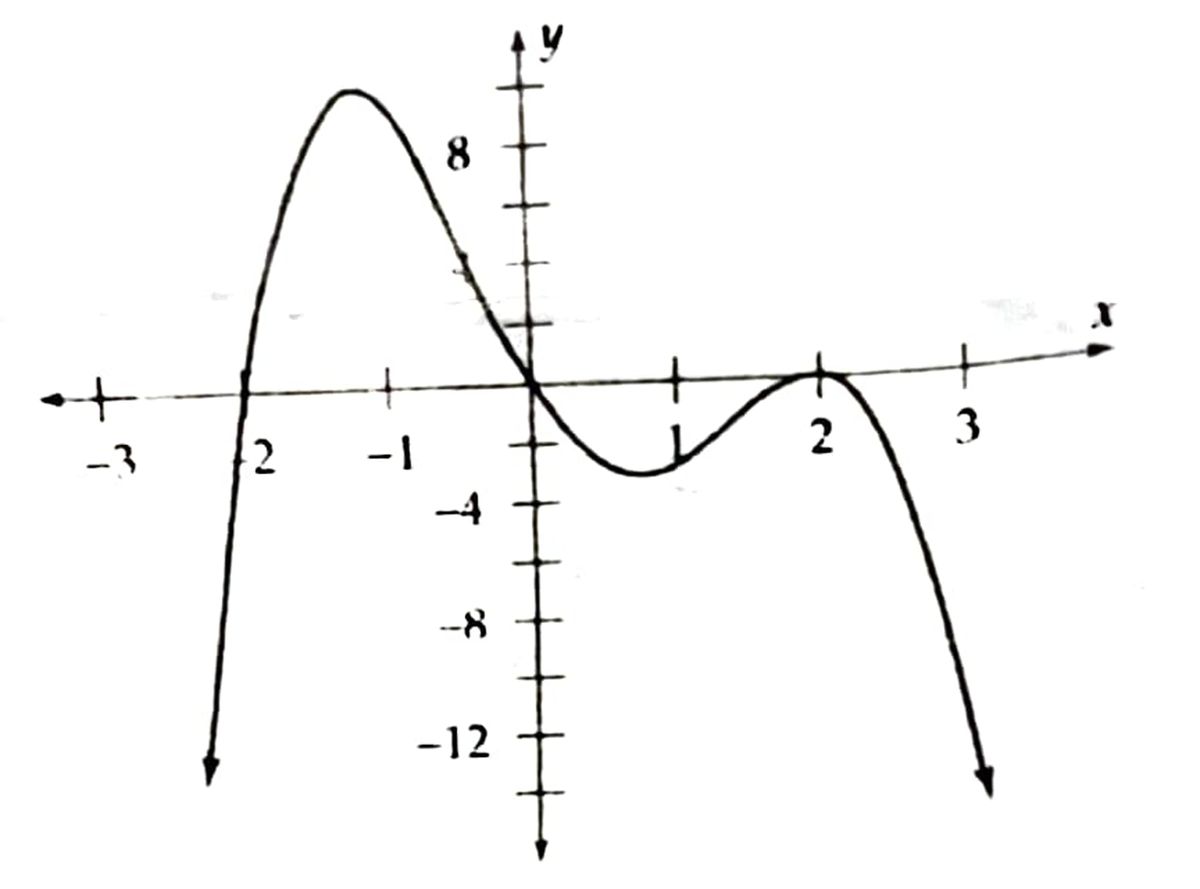Calculus: Early Transcendentals
8th Edition
ISBN:9781285741550
Author:James Stewart
Publisher:James Stewart
Chapter1: Functions And Models
Section: Chapter Questions
Problem 1RCC: (a) What is a function? What are its domain and range? (b) What is the graph of a function? (c) How...
Related questions
Question
100%
A complete graph of a polynomial is shown.
a) is the degree even or odd?
b) is the leading coefficient positive or negative?
c) what are the real zeros?
d) what is the smallest possible degree?

Transcribed Image Text:The image displays a graph on a Cartesian coordinate system with the x-axis labeled as \( x \) and the y-axis labeled as \( y \). The graph depicts a continuous curve that has the following characteristics:
1. The curve starts from the left, descending steeply from the upper part of the graph.
2. It rises to reach a peak slightly above the y-coordinate of 8, around \( x = -2 \).
3. The curve then descends, intersecting the x-axis approximately at \( x = -1 \).
4. It continues downward to reach a minimum below the y-coordinate of -8, near \( x = 1 \).
5. The curve rises again, crossing the x-axis between \( x = 2 \) and \( x = 3 \).
6. Finally, it descends sharply as it moves towards the right edge of the graph.
Below the graph, there are four lines labeled a), b), c), and d), intended for students to fill in answers or observations.
This graph can be used to study the behavior of functions, identifying features such as maxima, minima, and points of inflection.
Expert Solution
Step 1
Given graph:-

Step by step
Solved in 6 steps with 1 images

Recommended textbooks for you

Calculus: Early Transcendentals
Calculus
ISBN:
9781285741550
Author:
James Stewart
Publisher:
Cengage Learning

Thomas' Calculus (14th Edition)
Calculus
ISBN:
9780134438986
Author:
Joel R. Hass, Christopher E. Heil, Maurice D. Weir
Publisher:
PEARSON

Calculus: Early Transcendentals (3rd Edition)
Calculus
ISBN:
9780134763644
Author:
William L. Briggs, Lyle Cochran, Bernard Gillett, Eric Schulz
Publisher:
PEARSON

Calculus: Early Transcendentals
Calculus
ISBN:
9781285741550
Author:
James Stewart
Publisher:
Cengage Learning

Thomas' Calculus (14th Edition)
Calculus
ISBN:
9780134438986
Author:
Joel R. Hass, Christopher E. Heil, Maurice D. Weir
Publisher:
PEARSON

Calculus: Early Transcendentals (3rd Edition)
Calculus
ISBN:
9780134763644
Author:
William L. Briggs, Lyle Cochran, Bernard Gillett, Eric Schulz
Publisher:
PEARSON

Calculus: Early Transcendentals
Calculus
ISBN:
9781319050740
Author:
Jon Rogawski, Colin Adams, Robert Franzosa
Publisher:
W. H. Freeman


Calculus: Early Transcendental Functions
Calculus
ISBN:
9781337552516
Author:
Ron Larson, Bruce H. Edwards
Publisher:
Cengage Learning